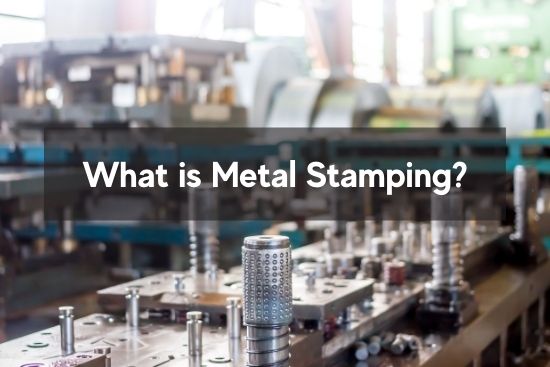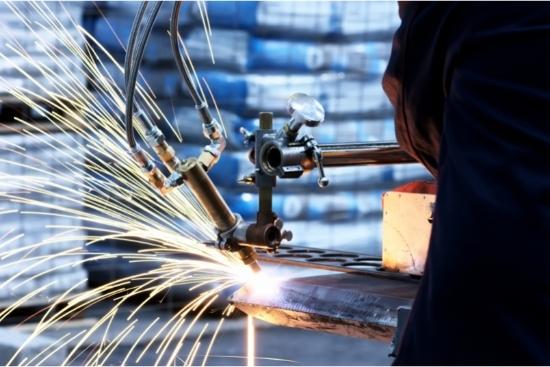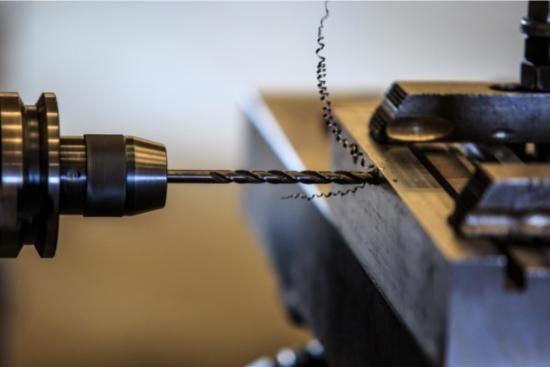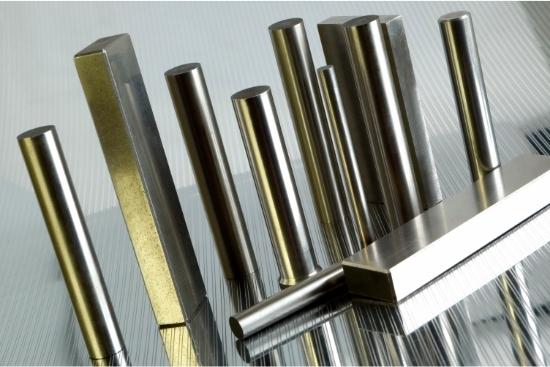Metal stamping is a complex manufacturing process used to create some of the most essential products in modern society. It uses various metal forming techniques to create components for various industries. These include the automotive, aerospace, and medical industry, among many others.
This blog will answer the question, what is metal stamping? We will also discuss any essential information about metal stamping. Part of the discussion will include the processes and techniques involved as well as its many applications. Read on to learn more about the cutting-edge techniques used in metal stamping.

What is Metal Stamping?
Metal stamping is a metal-forming operation that involves the processing of sheet metals. It uses various dies and stamping processes to cut sheet metal into specific shapes. Machines used in this operation apply ample shearing and bending forces to process sheet metal into different shapes. And as a cold-forming process, these take place at room temperature.
Machines used in metal stamping can be simple or complex. Some are capable of only a few cutting techniques, while others can cut and form in a single stroke. These machines are invaluable in high-speed manufacturing settings where speed and efficiency matter. Through these machines, manufacturing companies can process large volumes in less time.
Metal Stamping Techniques
The metal stamping process combines different techniques to create various shapes. They can be separated into two major categories based on the transformation. These are cutting and forming.
Cutting Techniques
In the metal stamping manufacturing process, cutting means applying a shearing force to cut out a piece of the base metal sheet. This shearing force must be high enough to exceed the material’s ultimate yield strength at the point of contact. This will ensure that the piece of metal separates completely from the base metal sheet.

Blanking & Punching
Blanking and punching are two similar metal fabrication techniques. They both involve the application of a puncturing force to cut out a metal piece from the base sheet. But both methods differ in the products they form and the materials scrapped in the process.
In blanking, the blank (the material punched) becomes the desired product. The base metal sheet is then scrapped or recycled. Meanwhile, the base metal sheet is the product aimed in punching and discarding the blank. In some cases, two products can be formed. This happens when both processes are combined to form two products from a single stroke.
Trimming
Trimming is applied when the width of the base metal sheet is bigger than the desired size. Here, the excess part of the metal sheet is cut out from the outer perimeter, leaving only the desired profile. The extra material is then scrapped or recycled.
Lancing
Lancing is a stamping method used to cut out a portion of a metal sheet without separating it from the base. The workpiece is cut along three edges while bent simultaneously to create the desired shape. This is useful in creating vents or tabs.
Forming Techniques
In the forming process, the machine applies a bending force to the sheet metal to mold it into the desired shape. The force applied is a combination of tension and compression to deform the metal.

Bending
Bending is a stamping method that induces plastic deformation to bend the metal using two separate dies. The forming die (the punch) pushes from above onto the metal sheet placed on an opposing bottom die. This motion and the shape of the die used will determine the bend profile in the workpiece. There are many types of bending techniques used in stamping metals. These include:
Bottom Pressing. In bottom pressing, the punch presses the workpiece downward until it touches the bottom surface of a V- or U-shaped die. This stamping method introduces precise bends into the workpiece without the risk of springback. This term describes a material’s tendency to return to its original flat state.
Metal Coining. Metal coining is similar to bottom pressing as it compresses the workpiece between the forming die and the bottom die. But in metal coining, both the punch and the die conform to create an exact angle in the workpiece. This compressive force applied is 30 times greater than other bending processes. As a result, the process creates a more accurate bend while eliminating springback.
Air Bending. Air bending is a bending technique that is less accurate than bottom pressing and coining. Due to this, it is often used to introduce a partial bend to the workpiece. The punch presses down on the workpiece and applies just enough force to bend the metal sheet without touching the bottom surface of the die. A sharper bend can be introduced as more bending force is used.
Metal Flanging. Metal flanging is a technique used to create perpendicular bends in metal sheets. In flanging, the workpiece is placed on a bottom die with an overhang while an upper pressure pad secures it in place. A forming punch then pushes down the protruding material to create a bend. While there is a tendency for springback, this can be compensated by modifying the die and punch angle.
Drawing
Drawing is a technique used to turn blanks into a hollow or concave shape with seamless edges. This is done by securing the blank on a blank holder, through which a draw punch is forced through its center. As the draw punch pushes down on the blank, the blank undergoes extreme stress and deformation to form the finished product.
Coining
Coining is a process that applies compressive force to the workpiece placed between a die and a press. As the punch pushes into the metal, it introduces a plastic deformation to the workpiece. This produces accurate, repeatable bends that conform to the shape of the punch. Although it’s similar to bending, coining is more specific. It is used in the manufacturing of coins, buttons, and badges.
Embossing & Debossing
In embossing and debossing, the machine presses the workpiece against the dies to alter its surface’s shape. The shapes produced using these techniques conform with the shape of the die used. But in embossing, the machine creates raised bumps on the surface. Meanwhile, the machine depresses the surface of the metal in debossing. These techniques add finer details to the workpiece, such as texts and logos.
Types of Metal Stamping Operations
Metal stamping manufacturing processes create a product through a series of stamping operations. These processes combine several of the techniques discussed above. They are either applied at the same time or in succession to mold the metal into the desired shape. The following are operations employed for stamping metals inside a manufacturing plant.
Progressive Die Stamping
Progressive die stamping involves subjecting sheet metals to stamping operations in succession. All the required techniques are performed along a sequence of stamping stations in a single machine. Each stamping station performs a single action (cut, bend, or punch) on the metal workpiece. Once the station performs the action, the sheet metal moves further along until the last step. The machine then ejects the final product from the base metal sheep upon completion.
Transfer Die Stamping
Transfer die sampling also involves a sequence of stamping stations. But it differs slightly through the fact that the machine ejects the workpiece from the metal sheet before performing any action. The workpiece then moves further along through a mechanical transport system. This is more beneficial to manufacturers as it allows parallel production, which improves efficiency.
Four-Slide Stamping
Manufacturers turn to four-slide stamping when they want to produce more complex components. In this process, the machine uses four sliding tools to introduce deformations and shape the workpiece into the desired shape. But instead of the traditional downward motion, the slides apply force horizontally. Each slide has one tool that can simultaneously bend, cut, or twist metal in a single stroke. No dies are used in this operation. Multi-slide stamping machines also exist, which have more than four moving slides.
Fine Blanking
Fine blanking is a precision process typically used to produce smooth edges on the metal. This process relies on three distinct movements from the machine. These include securing the workpiece, performing the blanking operation, and ejecting the product. But in contrast to conventional stamping, fine blanking operates at higher pressures. This ensures that the process reaches the level of precision required. For this reason, designers must account for high operating pressures when designing equipment.
Compound Stamping
In compound stamping, the stamper uses a single die to perform several actions on a single stroke. First, metal sheets are continuously fed into the stamper to improve the production rate. They are then ejected from the base metal sheet after each stroke. In doing so, manufacturers can cut production costs.
Types of Stamping Presses Used
Stamping presses are tools used to cut or shape metal sheets during the metal stamping manufacturing process. Their mode of action is like that of a hammer and anvil but instead uses precision components. In these processes, presses use male and female dies to dictate the shape of the final product.
Generally speaking, fabricators use three common types of stamping presses. These are mechanical, hydraulic, and mechanical servo technologies—more on these below.
Mechanical
Mechanical presses combine electric motors and a mechanical flywheel to store kinetic energy. With each stroke, the flywheel uses up the stored energy as it strikes down on the metal. The electric motor restores the lost energy on the upstroke to continue the cycle.
The punches on mechanical presses can range from 5mm to 500mm in size. Meanwhile, its pressing speeds will vary between 20 and 1,500 strokes per minute.
Mechanical presses are primarily used in operations with large production runs. They are mainly used when the operation calls for progressive and transfer stamping. One example of such an operation is the production of automotive parts.
Hydraulic
Hydraulic presses use hydraulic pumps to deliver force to the material. They use pressurized hydraulic fluid passed through a hydraulic cylinder that drives the slide down. The amount of force applied is proportional to the diameter of the piston head. Meanwhile, the piston head displaces the fluid in the cylinder. Through this process, hydraulic presses are able to offer a higher degree of control.
The size of the stroke is adjustable and can vary between 10mm and 800mm. Stroke speeds are also interchangeable, although these are typically slower than mechanical presses.
Overall, hydraulic presses offer more flexibility than mechanical presses. They are well-suited for smaller production runs that need deeper, more complex stampings (e.g., aluminum can production).
Mechanical Servo
Mechanical servo presses are somewhat similar to mechanical presses. But instead of using flywheels, they use high-capacity servo motors to deliver force.
In mechanical servo presses, the different aspects of their operations are programmable. As a result, they offer a higher degree of control over the ram position, stroke length, torque, etc.
Mechanical servo presses are more efficient than their traditional counterparts. They can be used to create more complex stampings at higher rates than hydraulic presses.
Types of Stamping Dies
Stamping dies are tools used in metal stamping operations to shape and cut sheet metal parts. They are developed and custom-built using computer-aided design (CAD) software and other analytical tools. This is because they need a higher degree of accuracy and perform specific actions.
Stamping dies are classified according to their function (cutting or forming). Both types are made up of almost the same components, which include:
- Die block – considered the female part of the die and is located at the bottom of the assembly. It is made up of rigid materials shaped like the final part. It also contains holes and protrusions necessary to form the final product.
- Die holder – supports the die block. It is used for fitting and turning dies when cutting or shaping materials.
- Punch – the male part of the assembly that moves downward. It takes care of applying enough shear or bending force to cut or form the workpiece. Like the die block, it is typically made from rigid materials, such as hardened steel or tungsten carbide. It can also be any material harder than the metal sheet.
- Punch plate – the mechanism on which the male component of the assembly is attached. A mechanical or hydraulic mechanism usually powers it.
- Pressure pads – secure the workpiece in place during forming.
- Stripper plate – responsible for the ejection of completed or discarded components after each stroke.
- Guide pins – aligns both the male and female components of the assembly.
- Pressure plates – installed to distribute the pressure delivered by the punch.
These are then assembled in several ways:
Single-Station Dies perform a single action per stroke. They are typically used in operations requiring only a few steps. They can also be used in settings that process only low volumes of metal sheets.
Multi-Station Dies involve using multiple die sets in sequence for faster processing speeds. They perform notching, punching, and cutting in sequence while metals are fed continuously to the stamper. Examples of multi-station dies include progressive and transfer dies.
Combination Dies perform more complex operations. These include simultaneous cutting and non-cutting operations in a single stroke. One example is a die that performs simultaneous trimming and flanging on a single sheet. This speeds up production time considerably.
Metals Commonly Processed in Metal Stamping
There are a variety of important considerations to make when selecting suitable materials. A material’s mechanical properties, for instance, influence its ability to conform during stamping. The desired features of the finished product should also be accounted for. Other considerations include:

Industry Application
The finished product’s application should be a primary consideration during material selection. This is because certain metals hold desirable properties appropriate for varying industries.
For instance, electrical components need high electrical and thermal conductivity. In this aspect, copper is the best choice. Meanwhile, the automotive industry requires rigid materials that can absorb impact. For this reason, metal alloys would make a great choice.
Tensile and Yield Strength
The tensile strength refers to the amount of force it can withstand before breaking. Meanwhile, its yield strength measures the greatest amount of force that can permanently change its shape. Both are important considerations as they influence the design of the manufacturing process. The final product must also withstand the mechanical stresses it is subjected to in its final application.
Machinability
Machinability refers to how easily the material can be cut using machines. Specialized equipment for cutting and stamping should not be involved in the process. This is due to time and budget constraints that dictate costs to be kept low. The material’s chemical composition, hardness, and grain size affect its machinability.
Formability
A material’s ability to plastically deform without breaking is known as its formability. Properties such as modulus of elasticity and bendability will impact a material’s formability. Fabricators should also consider its yield strength to minimize springback and eliminate defects.
Solderability/Weldability
Weldability is a crucial consideration if welding is a necessary production step. It refers to how easily a material can be joined together with a separate sheet through extreme heat. Keep in mind that special tools can negatively impact the production timeline.
Cost
A suitable material must have most, if not all, of the desired qualities of the finished product. However, it must also not be too costly. For instance, gold has good thermal and electrical conductivity and is malleable. But it is also a precious metal, which is too expensive for fabricating high volumes of products.
Factoring all of the above, here are some of the most common raw materials in metal stamping:
- Copper and Copper Alloys – famed for being excellent conductors. They have high thermal and electrical conductivity, malleability, and ductility. They are also excellent materials to use in cold-forming processes like stamping. As a result, copper products have many applications across different industries. These include refrigeration, plumbing, power, and construction.
- Steel and Steel Alloys – made from a combination of iron and carbon. Steel and its alloys can vary their mechanical properties based on the concentration of alloying materials. For instance, more carbon makes the steel harder but brittle. Higher nickel and chromium concentrations make the alloy more resistant to corrosion. Its common applications include automobiles, mechanical and electrical equipment, infrastructure, and domestic appliances.
- Aluminum and Aluminum Alloys – among the most desirable metals in stamping. They have high malleability, flexibility, ductility, softness, and a high strength-to-weight ratio. This combination of properties makes them easy to stamp without failing. They are also low-cost and lightweight. Through these qualities, they can be used in the beverage, automotive, and aerospace industries.
Titanium and Titanium Alloys – have applications in aerospace, nuclear, marine, and energy sectors. Their low-density, high-strength compositions give them the ability to withstand extreme conditions. However, these qualities also make the stamping process more challenging.
Advantages of Metal Stamping
Efficiency in Production
Metal stamping is a highly-efficient process. It uses a variety of dies to perform multiple functions in a single stroke of the press. This improves efficiency and drastically shortens production time. Through automation, fabricators can produce high volumes of metal products in less time.
High Precision
With the help of advanced technology, metal stamping processes today can achieve high production rates while producing high-quality identical products. This is possible through automated controls and accurate tooling that can fulfill even the most complex shapes.
Low Production Costs
Compared to other metal forming techniques, metal stamping offers significantly lower costs. Process automation reduces the cost of labor while having higher outputs. Ultimately, the stamping process can offset manufacturing costs and create a lucrative operation.
Recyclability of Materials
Production costs can be reduced further in metal stamping thanks to the recyclability of materials. Any pieces of scrap metal leftover can be reprocessed into new sheets of metal for use in future products.
A Trusted Name
Quick-Way Manufacturing has established a reputation as a valuable, trusted contract manufacturer in metal stamping since 1961. With industry-leading experience and in-depth knowledge, you can trust our experts to deliver top-quality stamping products with fast turnaround times. Contact us today for state-of-the-art metal stamping solutions that will fulfill your requirements and meet even the most demanding manufacturing needs.

Comments are closed.